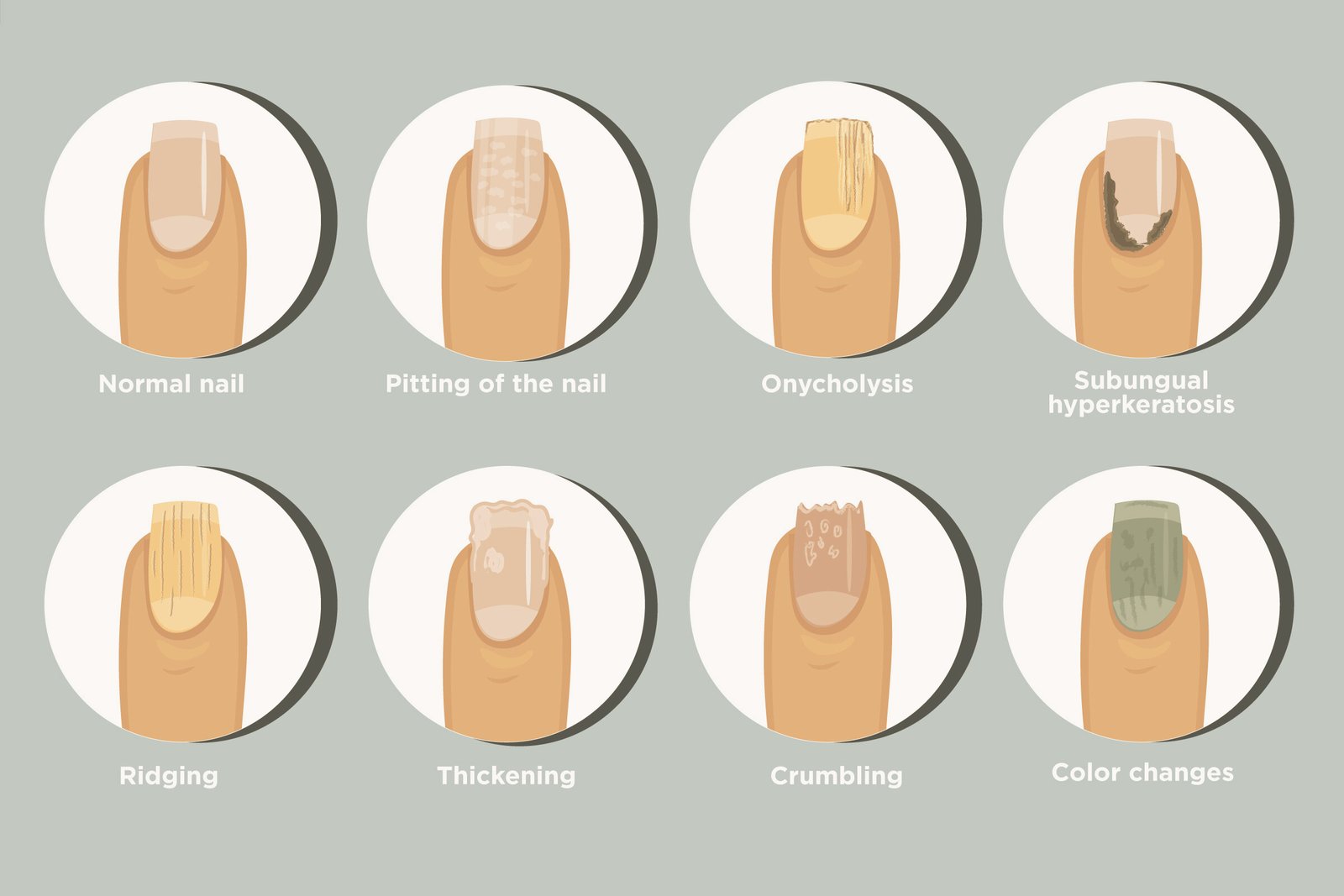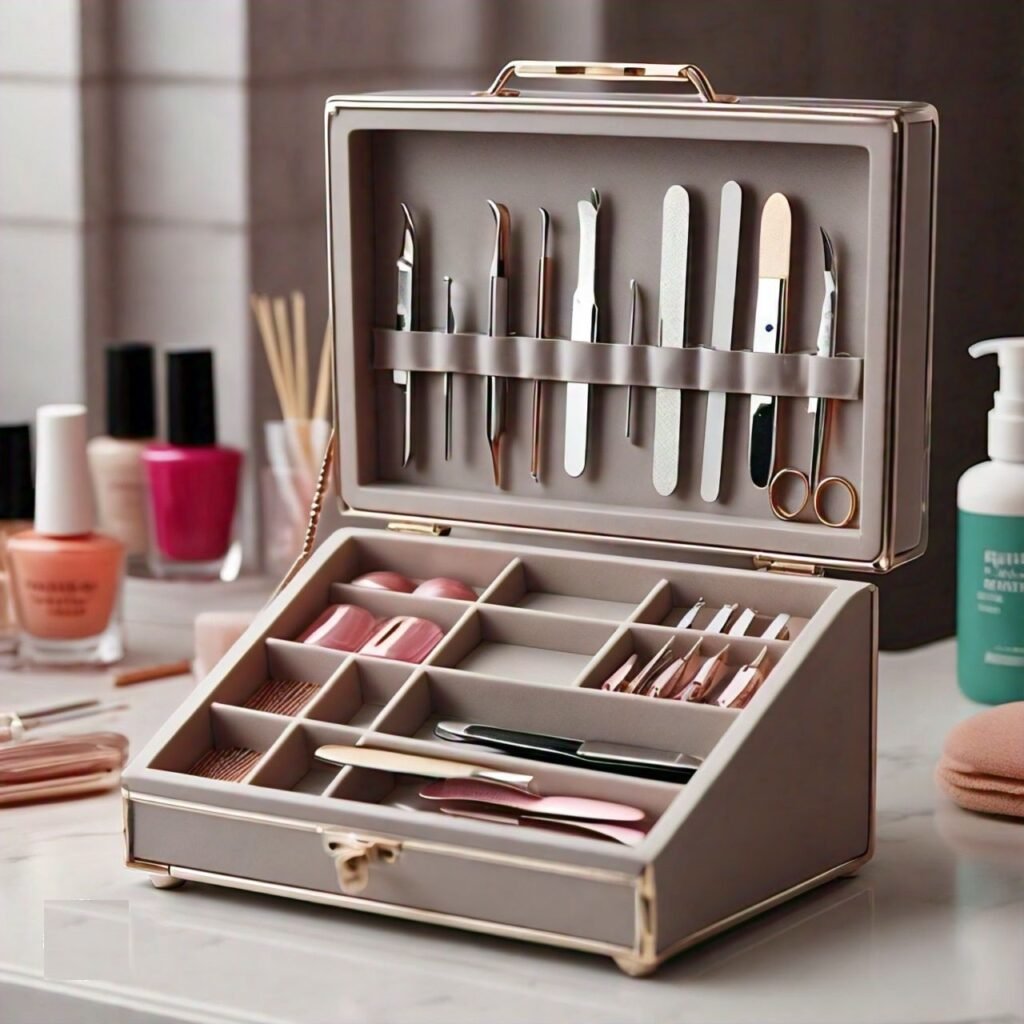
Our nails, often taken for granted, are more than just aesthetic enhancements. They act as protective shields for our fingertips, aiding in tasks like grasping and scratching. But to truly understand nail health, we need to delve deeper and explore the fascinating world of nail anatomy.
The visible portion of the nail, the one we paint and polish, is just the tip of the iceberg. Beneath the surface lies a complex network of tissues that work together to produce and maintain strong, healthy nails. Let’s embark on a journey to understand the key components of nail anatomy:
- Nail Plate: This is the hard, translucent layer that forms the visible portion of the nail. It’s composed of compacted, keratinized cells that provide strength and protection.
- Nail Bed: Located beneath the nail plate, the nail bed is a well-vascularized layer of tissue that nourishes the growing nail. It’s responsible for the pink color we see through the nail plate.
- Nail Matrix: This is the hidden gem of the nail unit. Located under the proximal nail fold (the skin fold at the base of the nail), the nail matrix is the germinal tissue responsible for nail growth. New nail cells are continuously produced here and pushed forward, displacing older cells that become the visible nail plate.
- Lunula: The white, crescent-shaped area visible at the base of some nails is the lunula. It represents the most visible portion of the nail matrix.
- Eponychium (Cuticle): Often mistaken for the cuticle, the eponychium is a thin layer of dead skin cells that forms a seal between the nail plate and the surrounding skin.
- Paronychium: This refers to the skin folds that surround the nail plate on the sides and at the base. It helps protect the nail bed from infection.
- Hyponychium: The hyponychium is the thickened skin beneath the free edge of the nail plate. It plays a role in sealing the nail unit and preventing foreign objects from entering.
Understanding these anatomical components is crucial to appreciating the intricate mechanisms of nail growth and maintenance. In the next section, we’ll explore how various factors can disrupt this delicate balance, leading to common nail problems.
Decoding Nail Problems: A Guide to Healthy, Beautiful Nails
With a foundational understanding of nail anatomy, we can now delve into the world of nail health. Just like any other part of the body, nails are susceptible to a variety of problems. These issues can not only be unsightly but also indicative of underlying health concerns. By recognizing common nail problems and their potential causes, we can take steps towards achieving healthy, beautiful nails.
Unveiling the Culprits: Common Nail Problems and Their Causes
- Brittle Nails: Prone to breaking, splitting, and peeling, brittle nails can be a source of frustration. Several factors can contribute to this, including:
- Dryness: Lack of moisture is a major culprit. Frequent handwashing, exposure to harsh chemicals, and dry weather can all sap nails of their natural oils.
- Nutritional Deficiencies: Deficiencies in vitamins like biotin, iron, and B vitamins can impact nail health.
- Aging: As we age, nail production slows down, making them more susceptible to drying and breakage.
- Medical Conditions: Certain medical conditions like thyroid problems or iron deficiency anemia can manifest in brittle nails.
- Vertical Ridges: These are usually harmless and run from the base of the nail to the tip. They are a natural part of the nail plate’s growth pattern and become more noticeable with age. However, deep or prominent ridges may warrant a visit to a dermatologist to rule out any underlying issues.

- Horizontal Ridges: These less common ridges may appear due to:
- Injury: Trauma to the nail bed can cause temporary horizontal ridges as the nail grows out.
- Medical Conditions: Certain illnesses or deficiencies can cause these ridges.

- Discoloration: Nails that deviate from their usual pink tone can be a cause for concern. Common discolorations include:
- White Spots: These are usually harmless and caused by minor injuries to the nail bed.
- Yellow Nails: While yellow nails can sometimes be caused by lifestyle factors like smoking or using harsh nail polishes, persistent yellowing can indicate a fungal infection. In such cases, consulting a dermatologist for diagnosis and treatment is crucial.
- Brown Nails: Brown discoloration can be caused by a variety of factors, including:
- Melanoma: While rare, a dark brown or black line under the nail can be a sign of melanoma, a serious form of skin cancer. If you notice such a line, seek immediate medical attention.
- Silver Nitrate Stains: Exposure to silver nitrate, a medication used to treat certain skin conditions, can cause permanent blue-gray discoloration of the nails.
- Trauma: Severe injury to the nail bed can cause bleeding under the nail, leading to a brown or red discoloration that fades as the blood gets reabsorbed.
- White Nails: While white spots are typically harmless, complete whitening of the nail plate (leukonychia) can be a sign of underlying medical conditions like liver disease, kidney problems, or congestive heart failure. Consulting a doctor is recommended if you experience complete whitening of the nails.
Nailing the Solutions: Tips for Healthy Nails
Now that we’ve unveiled the potential causes behind these common nail woes, let’s explore solutions to get your nails back on track:
- Hydration is Key: Moisturize your hands and nails regularly using a good quality hand cream or lotion. Look for products containing ingredients like shea butter or jojoba oil, which help lock in moisture and prevent dryness. Consider applying cuticle oil specifically designed to nourish the nail bed and surrounding skin.
- Embrace Nail-Friendly Habits: Wear gloves when doing chores that involve harsh chemicals like cleaning products or detergents. Opt for acetone-free nail polish removers, as acetone can be very drying to the nails. Minimize your use of artificial nails and harsh nail treatments, as these can damage the nail plate.
- Diet Makes a Difference: Ensure a balanced diet rich in essential vitamins and minerals that contribute to nail health. Biotin, iron, and B vitamins are particularly important for nail growth and strength. Consider incorporating foods like nuts, seeds, leafy greens, and lean protein into your diet. If you suspect a deficiency, consult a doctor before starting any supplements.
- Be Gentle: Avoid biting or picking at your nails. This can damage the nail bed and lead to further problems. Use nail clippers instead of scissors to trim your nails straight across, and gently file the edges to prevent snagging.
- Seek Professional Help: If your nail problems persist or worsen, consult a dermatologist. They can diagnose the underlying cause and recommend appropriate treatment. For example, fungal infections may require antifungal medications, while nail brittleness due to a vitamin deficiency may be addressed with targeted supplements.
Beyond the Basics: Additional Tips for Beautiful Nails
For those seeking to elevate their nail care routine, here are some additional pointers:
- Maintain a Healthy Length: Long nails are more prone to breakage. Opt for a shorter, manageable length to minimize the risk of splitting and tearing.
- Buff and Shine: Buffing can help smooth out minor ridges and imperfections on the nail surface, creating a more even canvas for nail polish. However, avoid over-buffing, as this can thin the nails and make them more susceptible to damage. Use a gentle nail buffer and focus on light, even strokes.
- Nail Care Routine: Consider incorporating a weekly nail care routine that includes gentle exfoliation to remove dead skin cells around the nail, trimming and shaping with clippers and files, and applying a nourishing oil or cream to promote healthy growth.
By understanding the causes behind common nail problems and implementing these simple yet effective solutions, you can achieve healthy, beautiful nails that not only look great but also effectively protect your fingertips. Remember, healthy nails are a reflection of overall well-being. So, listen to what your nails are telling you and take steps to nurture them from the inside out. With a little TLC, you can have strong, beautiful nails that you can be proud of.





